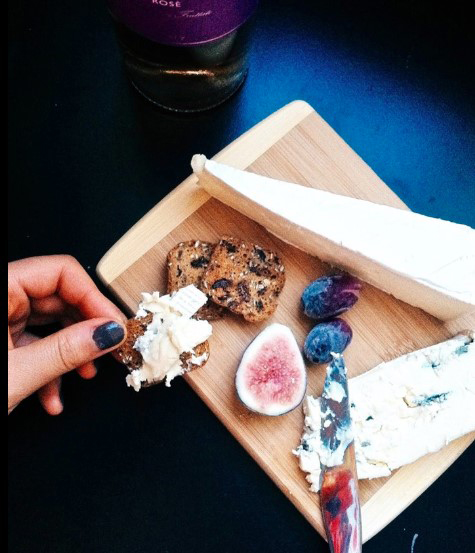 Have you been to a social function complete with wine and cheese but couldn’t seem to exactly pinpoint the name of the slices of gooey goodness? I had the same indecision, as I pick up a mysterious slice, not understanding how to properly use this even if I had purchased a pack myself. Recently, though, after hosting a Game of Thrones finale Medieval-style wine and cheese night, I have learned enough to safely introduce some of my favorites. For students who are planning on splurging a bit for their summer Netflix marathons with friends and family, this is a great starting place to show off your “exper-cheese.” Here are some must-know cheeses and how they can be used, whether in the kitchen or otherwise!
Have you been to a social function complete with wine and cheese but couldn’t seem to exactly pinpoint the name of the slices of gooey goodness? I had the same indecision, as I pick up a mysterious slice, not understanding how to properly use this even if I had purchased a pack myself. Recently, though, after hosting a Game of Thrones finale Medieval-style wine and cheese night, I have learned enough to safely introduce some of my favorites. For students who are planning on splurging a bit for their summer Netflix marathons with friends and family, this is a great starting place to show off your “exper-cheese.” Here are some must-know cheeses and how they can be used, whether in the kitchen or otherwise!
Brie
This is my all-time favorite cheese; one that melts as easily in your mouth as butter. Brie cheese originates from an area of France that specializes in producing soft cheeses. The distinct white mould surrounding the interior is a feature that makes this cheese easy to identify on the charcuterie board. The interior is made from cattle milk giving it a soft, gooey texture when heated. My personal favorite recipe for this cheese includes melting the cheese on top triscuits in the oven or microwave. Remember, only a minute in the oven (and seconds in the microwave) will create the highly sought-after stretchy and sauce-like texture.
Camembert
The less creamy counterpart to the Brie is the Camembert. The main reason for the creamier texture of Brie is the higher fat content used during production. Sometimes up to triple cream is used to give the gooey, melt-in-your-mouth sensation. Camembert, on the other hand, has more intense, earthy flavors than the Brie. Both cheeses originate from the same area in France, however, and are nearly indistinguishable.
Parmigiano-Reggiano
Shortened to simply “Parmesan”, this aged cheese is made exclusively from unpasteurized cow milk. Unlike other cheeses, the only additive in the fermentation process is salt. Typically the average Parmigiano is aged for two years before being served (Gastaldello). Parmigiano is a must-have on the cheese board. Given its classification as a hard cheese, parmigiano has a strong flavor as most of the moisture is required to have left the final product.
Blue Cheese
Did you know the same mould that adds flare to your otherwise pale slice of cheese is the same antibiotic that you receive from your family doctor? Yup, penicillin is the active ingredient that gives this cheese a pungent scent and flavor. Blue cheese was discovered by accident when cheeses were stored in moisture filled caves (Fabricant) The distinct blue color comes from the mould spores burrowing through the cheese in search of oxygen. My personal favorite recipe include the blue cheese dipping sauce. After melting the blue cheese in a saucepan, adding sour cream, lemon and Worcestershire sauce makes a sensational dip for crackers and veggies.
References
Gastaldello, Famiglia., “Standard di Produzione” in Disciplinare del Formaggio Parmigiano Reggiano D.O.P. (fourth paragraph). Archived 2006-05-13 at the Wayback Machine
Fabricant, Florence (June 23, 1982). “Blue-veined Cheeses : The expanding choices”. The New York Times. Retrieved May 22, 2010.

